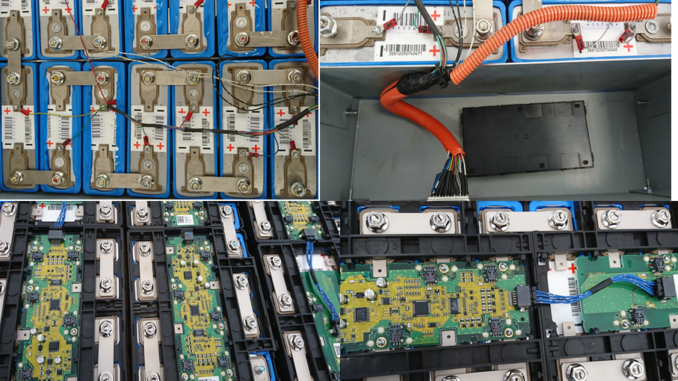
In La Tribune 24/6/ 2019
Mileage is no longer an obstacle, and yet several questions arise when we think of the electric car. In 2018, its sales represented about 2% of the world market. Almost equivalent to the total volume of the French market, this rapidly growing demand will be less and less marginal, so there is still time to set some ideas for the future of electric mobility.
The price of an electric vehicle is strongly linked to its lithium-ion battery, and the cost of the battery depends greatly on the materials that make up its electrodes. The first generation of these batteries favoured cobalt, then they gave way to nickel-manganese-cobalt batteries. Recently, their combinations have evolved from ratios of 30% nickel-30% manganese – 30% cobalt to combinations richer in nickel: 80% nickel-10% manganese – 10% cobalt. According to this evolution, if 100% of the cars sold each year were instantly equipped with a 100% electric motorization (without hybrid), we would have to at least double the world production of nickel, multiply by nearly three that of cobalt, and not to mention other useful metals to increase that of copper by nearly 20%.
These are huge growths and if they are possible, in such a market heading north, the next mines will probably be the most expensive and will determine the market prices of nickel, copper, cobalt… Although the price of batteries continues to fall as a result of technological progress and the consolidation of this industrial sector in China, in such a context the next prices of these metals would drastically increase the cost of batteries and therefore those of cars. By passing, let’s note that following the progress of engine manufacturers, electric vehicles will do without lanthanides (rare earths) like what BMW and Renault already sell; under other skies, platinum embarrass the economy of the hydrogen engine, because it consumes 5 to 7 times more PGM than a catalytic converter
Does the battery solution carry a mortal sin within it? Should we quickly pass through the NMC step towards a second, more distant horizon: lithium-solid batteries less « metallivore »? This technology is still expensive and requires improvements, and will require an annual amount of lithium that is still difficult to assess at this stage. But here copper will always be necessary for electrical interconnections.
In the meantime, although its internal combustion engine still emit pollution, hybrid car, which consumes less metals in its battery as it is smaller, is perceived as a possible step. Unfortunately, it has the disadvantage of accumulating the consumption of expensive metals: platinum, palladium and rhodium for its catalytic converter, as well as metals for its battery and also copper.
It is therefore time to accept that a revolution of ideas, guided by new environmental criteria and impregnated with new metallic realities, prevents the 100% electric vehicle from sinking into competitive consumption: in other words, if mining supply cannot supply demand, these metals would not only become critical metals, but also strategic for sovereign state policies: defence, this or that industrial policy…. It is this critical-strategic accumulation that transforms these materials into metals “unobtainium”; it is this accumulation that then generates political emotions, itself creating harsh judgments and then irremissible policies that geology cannot answer. In the end, the great danger faced by ideologies, and policies that support them, such as the ecological transition, is to exclude themselves from real life, to no longer understand their impacts on populations and to lose the link with the industrial world. When promises are not kept, democracy in the broad sense is in danger.
Conversely, electric mobility will no longer be a mirage if it is demand that adapts to supply. For example, if copper is recognized as the determining factor, and an electric vehicle continues to consume four times more copper than a gasoline vehicle, then we should produce four times fewer electric cars. In other words, we will have to accept that the end of the internal combustion engine will lead to a model that is sometimes misunderstood and often rejected: autonomous electric cars, connected cars and car-sharing.
Let’s face it; this perspective is disturbing for many. However, this somewhat brutal vision must be compared to that of shared self-service electric bicycles and electric scooters . Although still undisciplined, it is prized by the new generation that has adopted it. In addition, this vision will certainly be made more flexible according to technological progress and possible substitutions, for example copper with aluminium. In addition, like lanthanides that disappear from electric cars, if we are lucky, rather than increasing consumption exponentially, the marriages of electric transport (including air plane) with 5G, the Internet of Things and artificial intelligence will contribute to further saving the consumption of these precious metal resources.